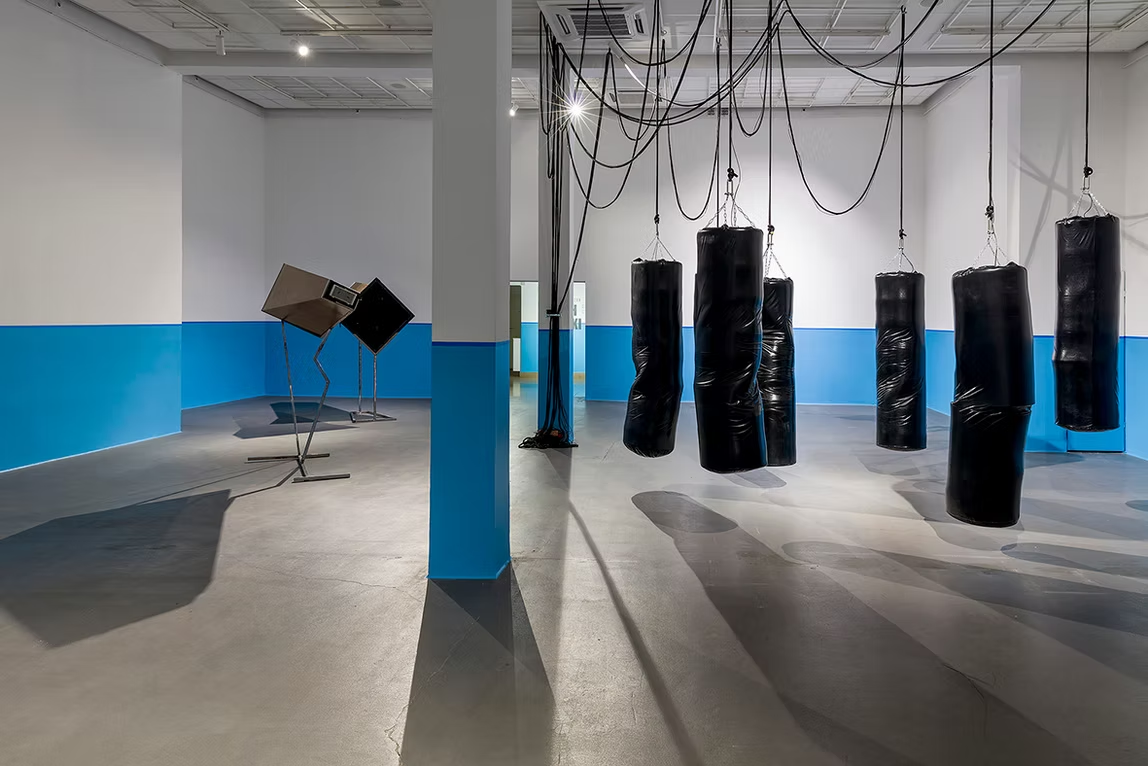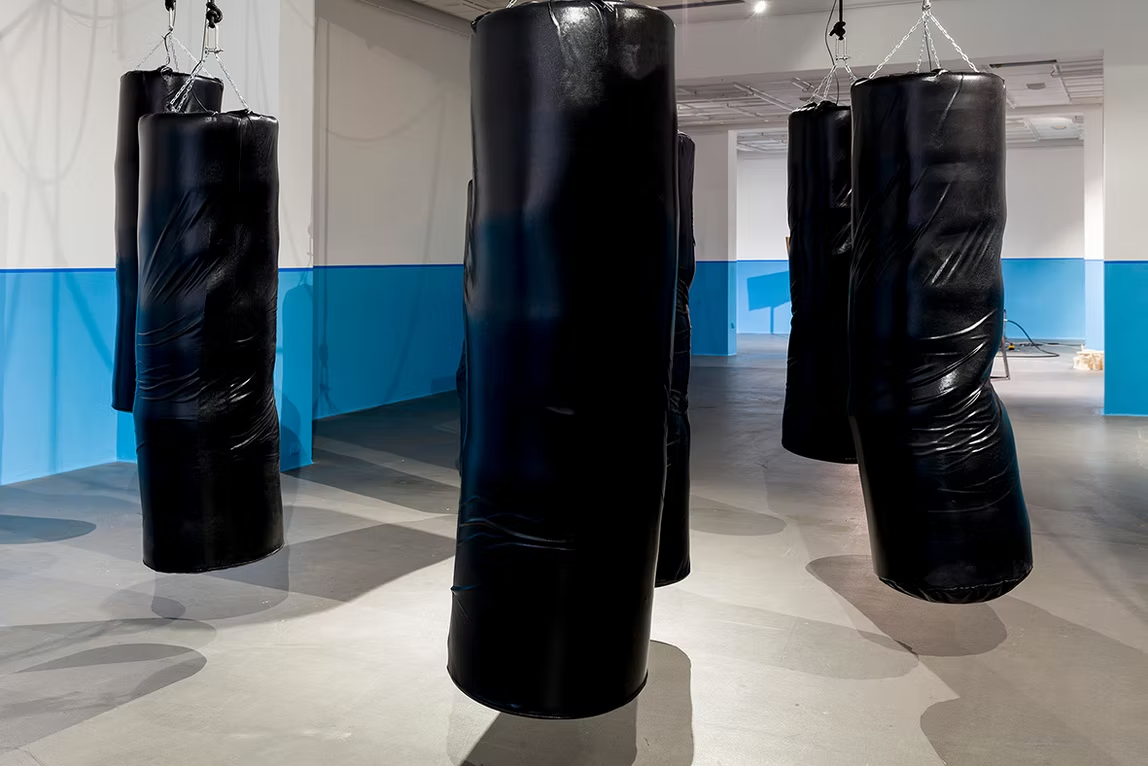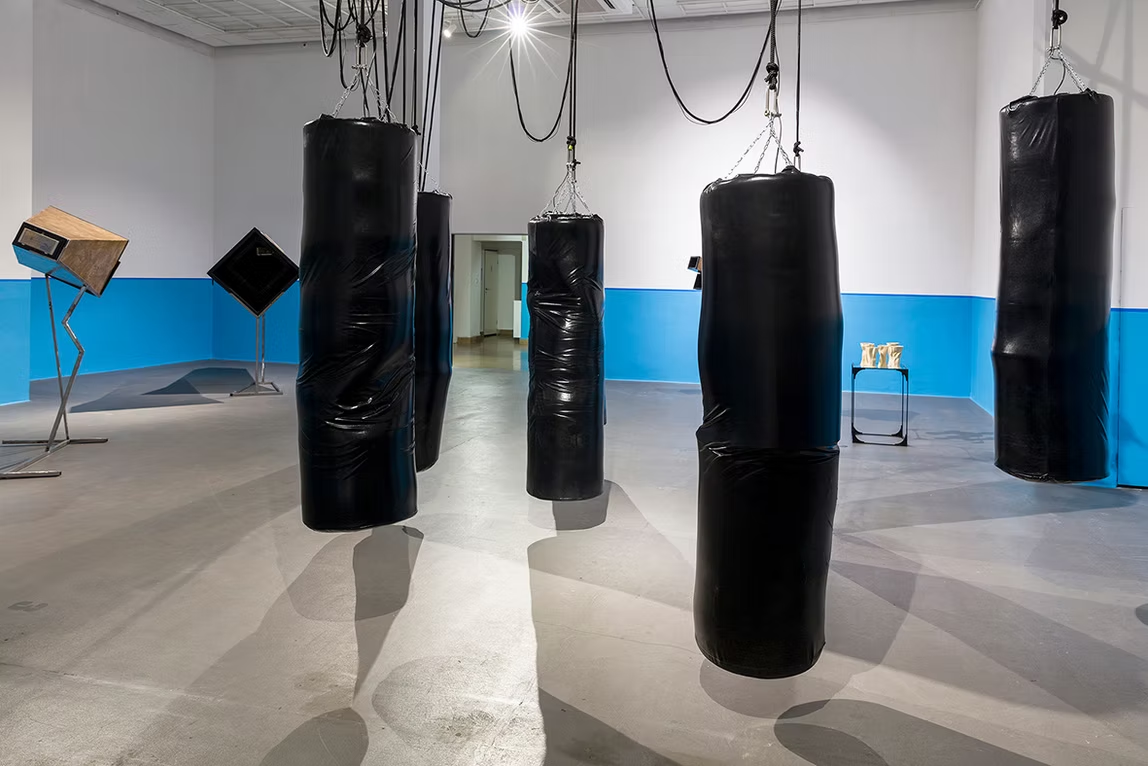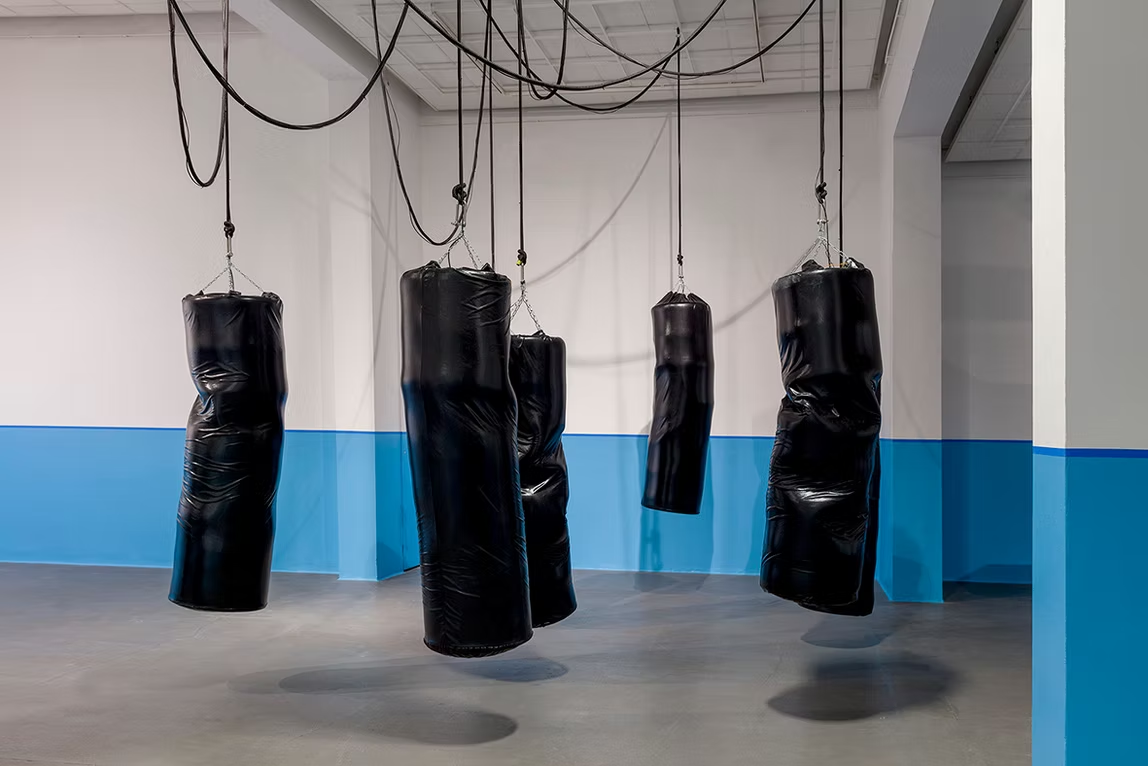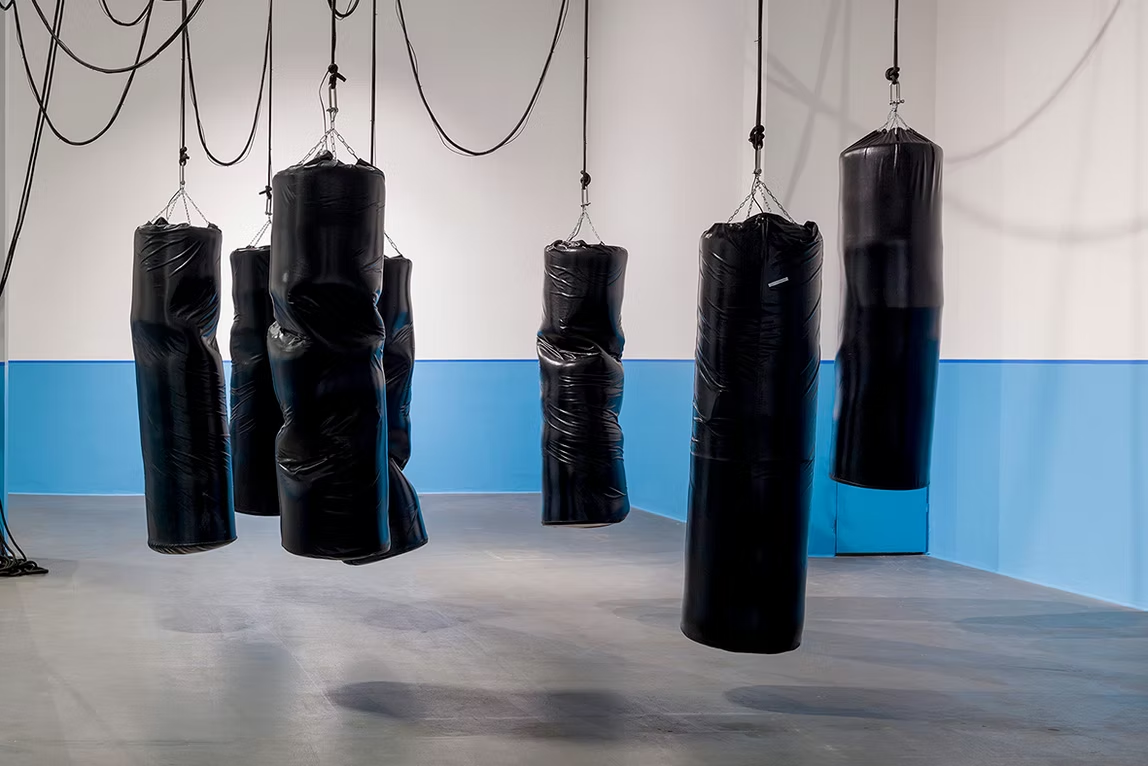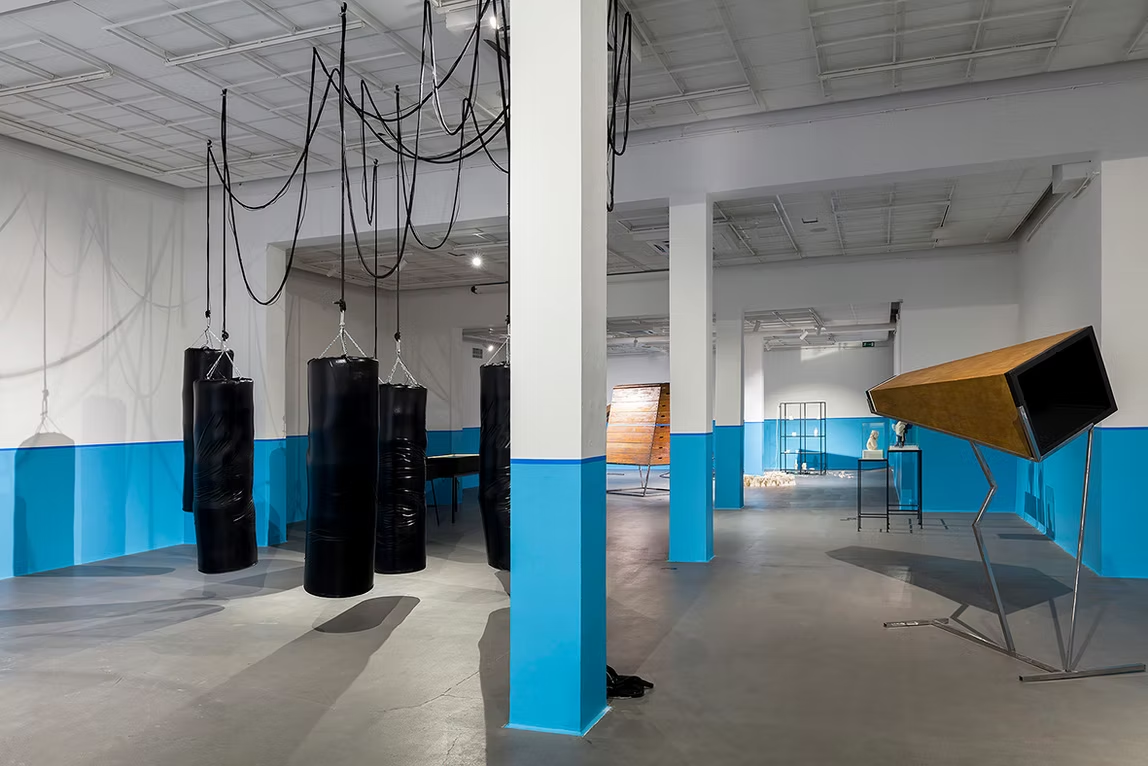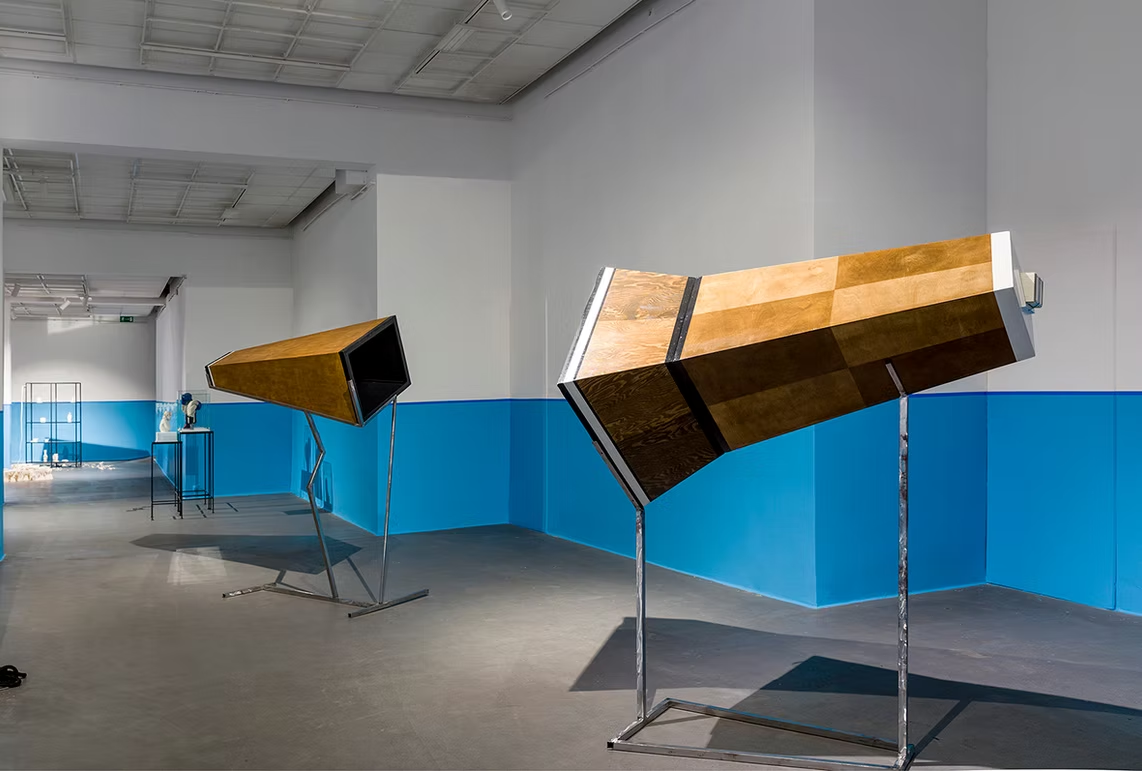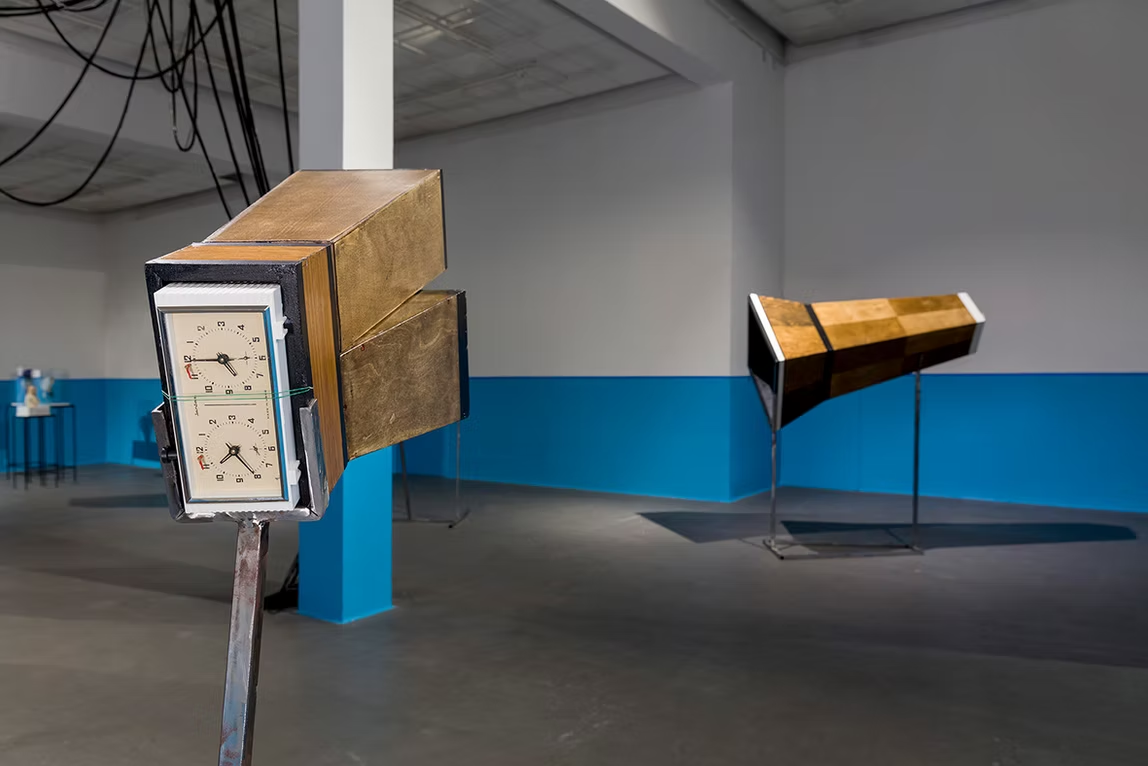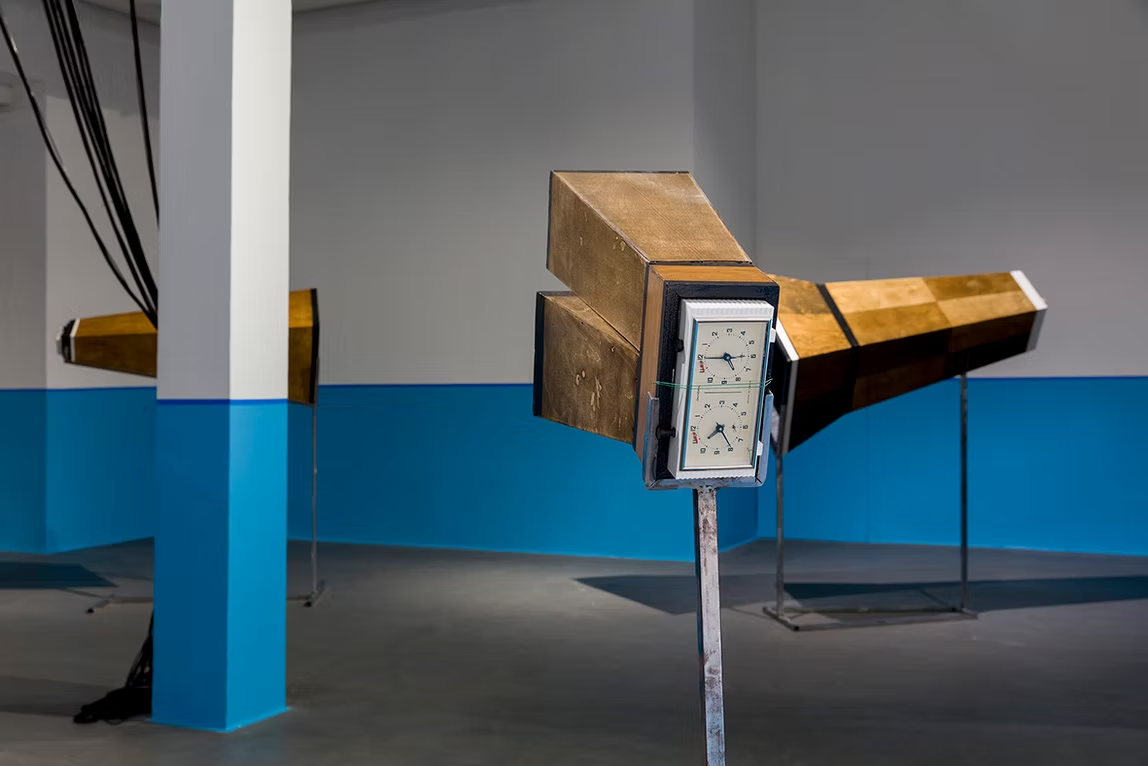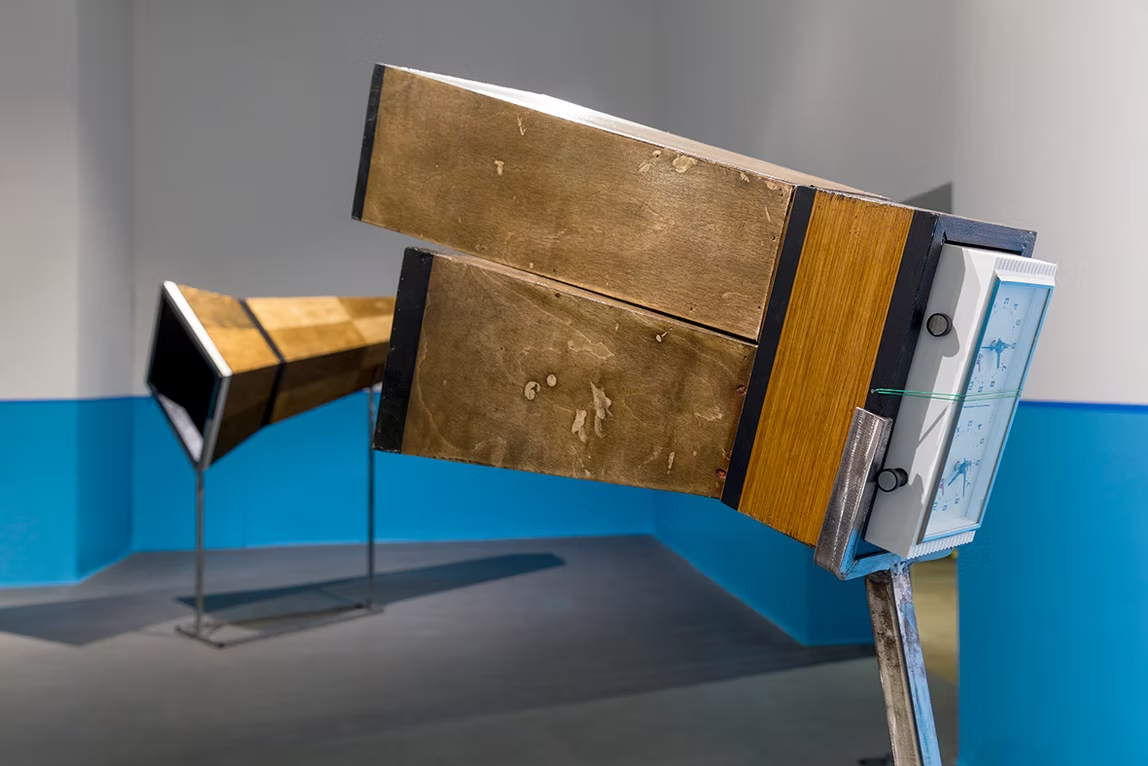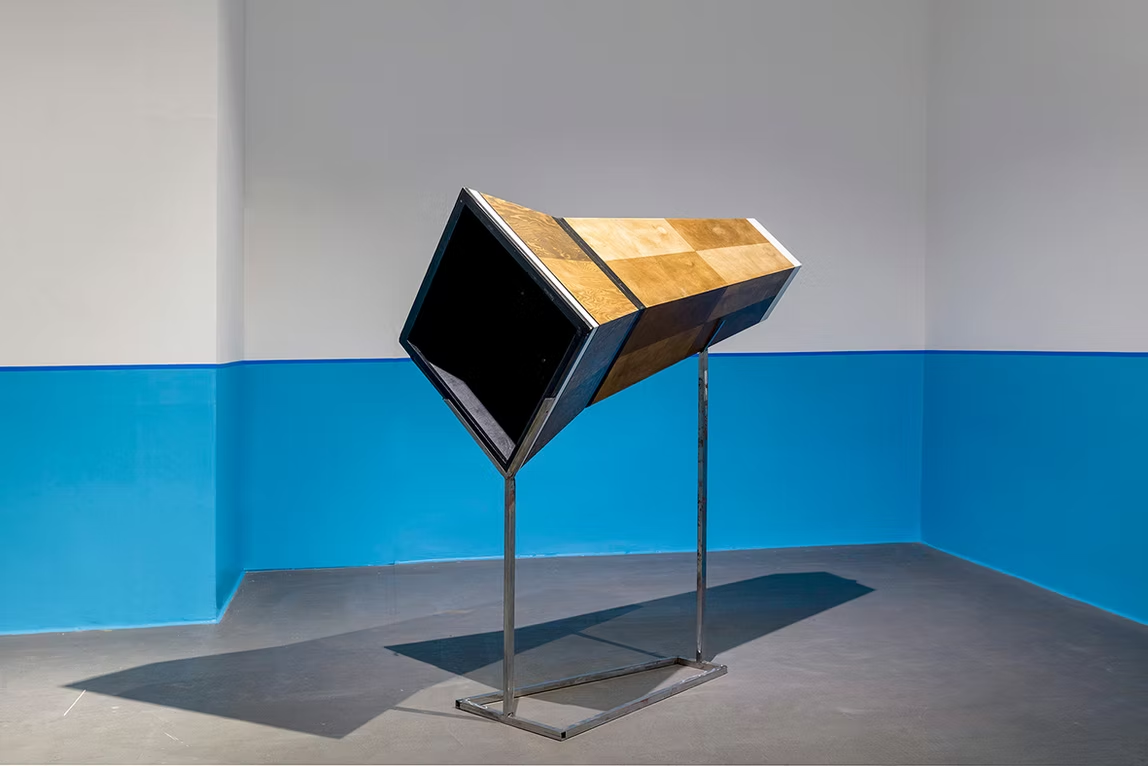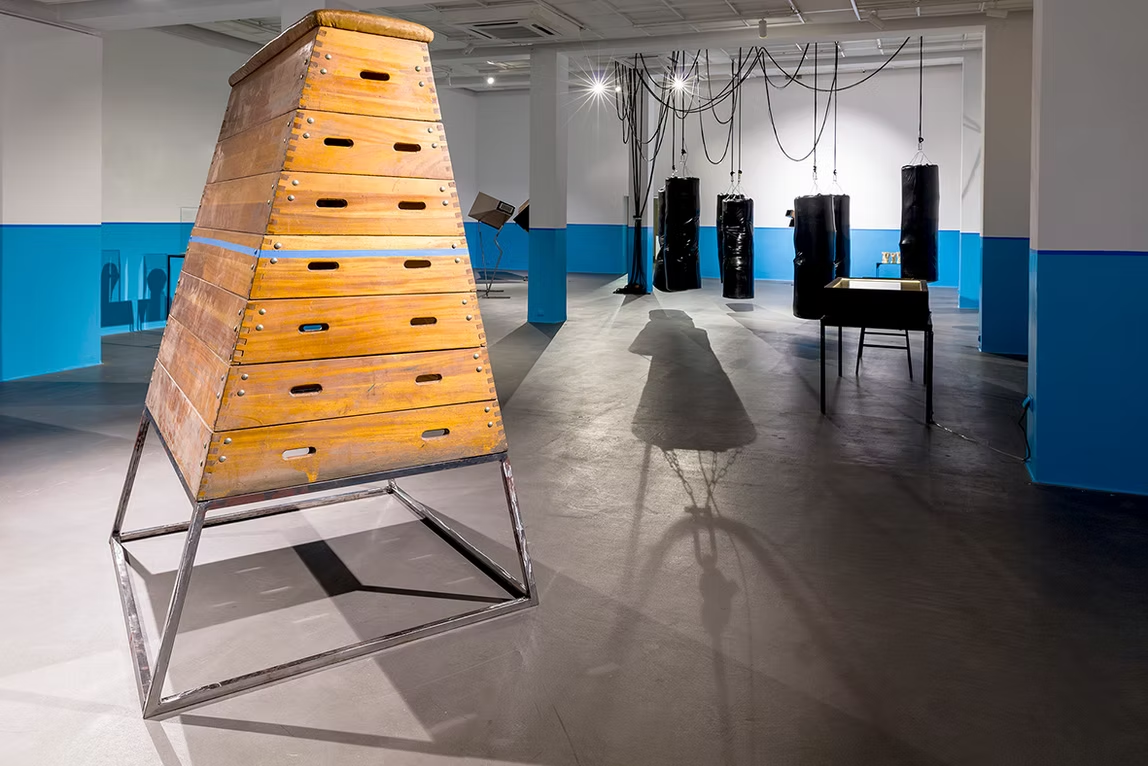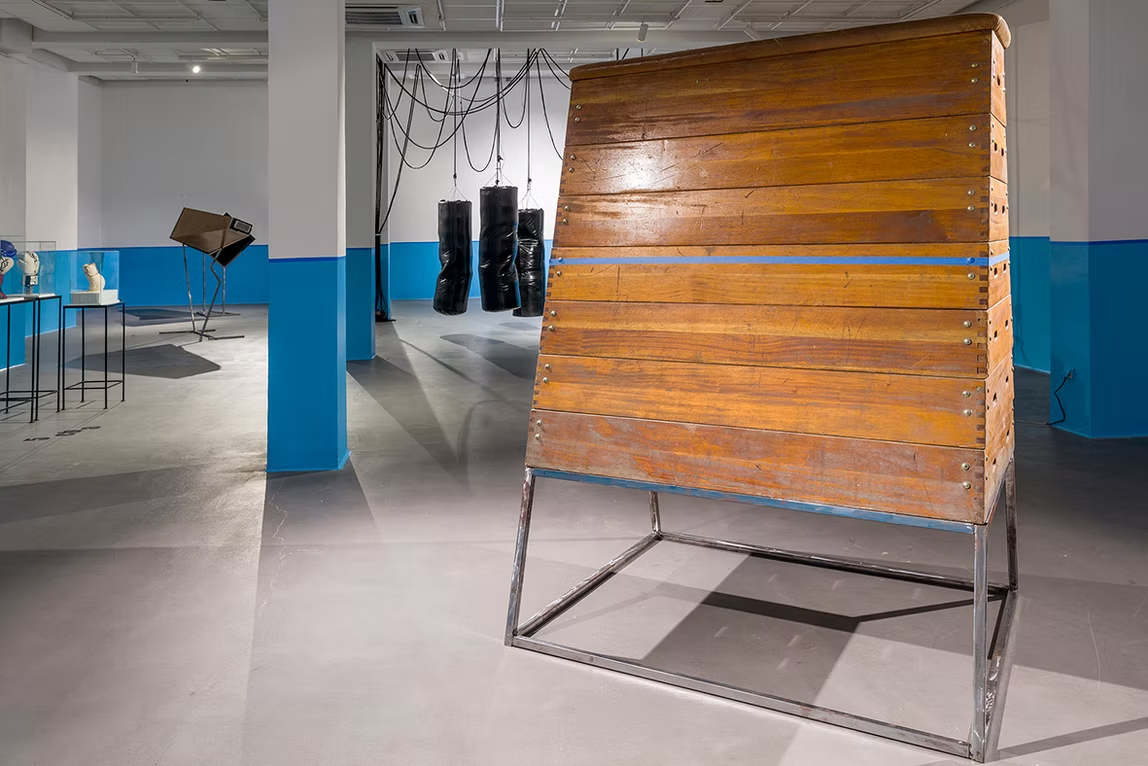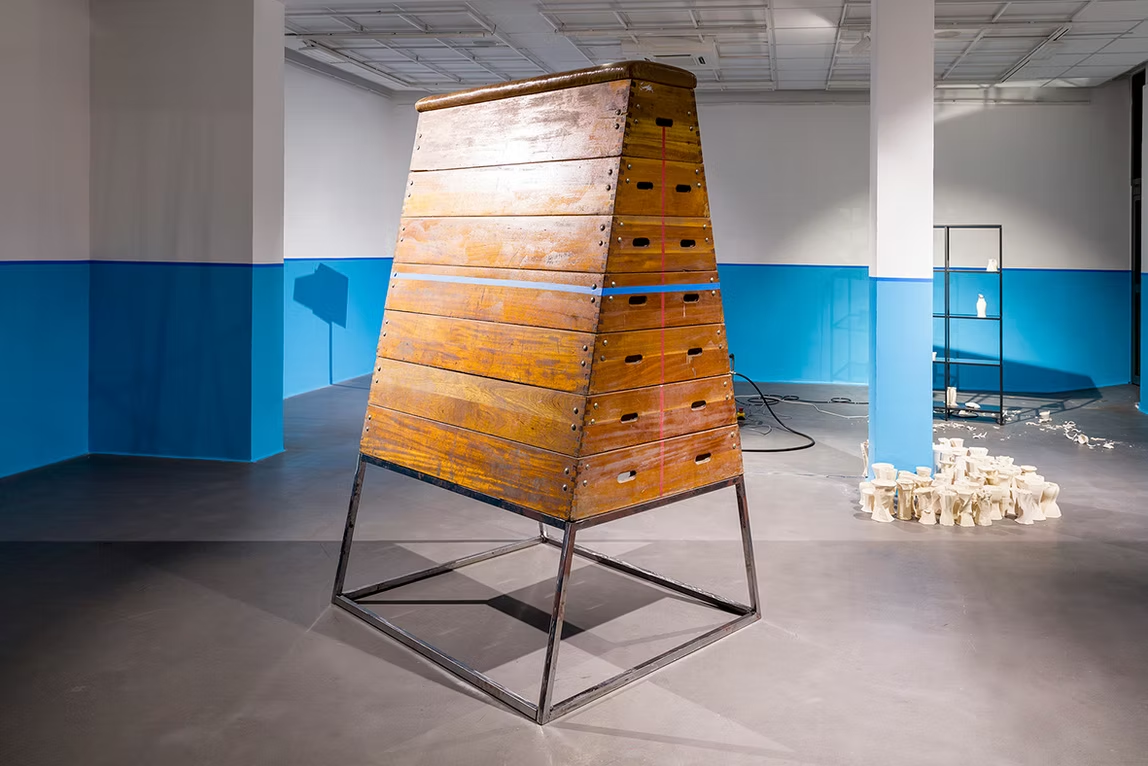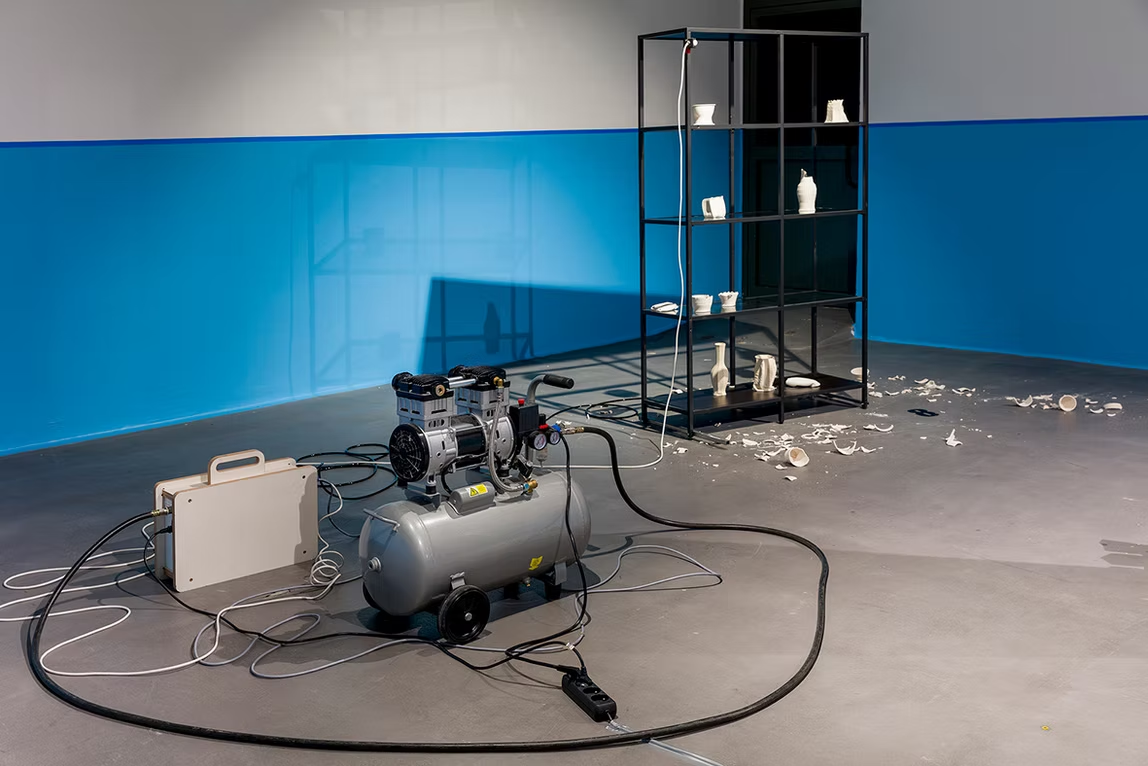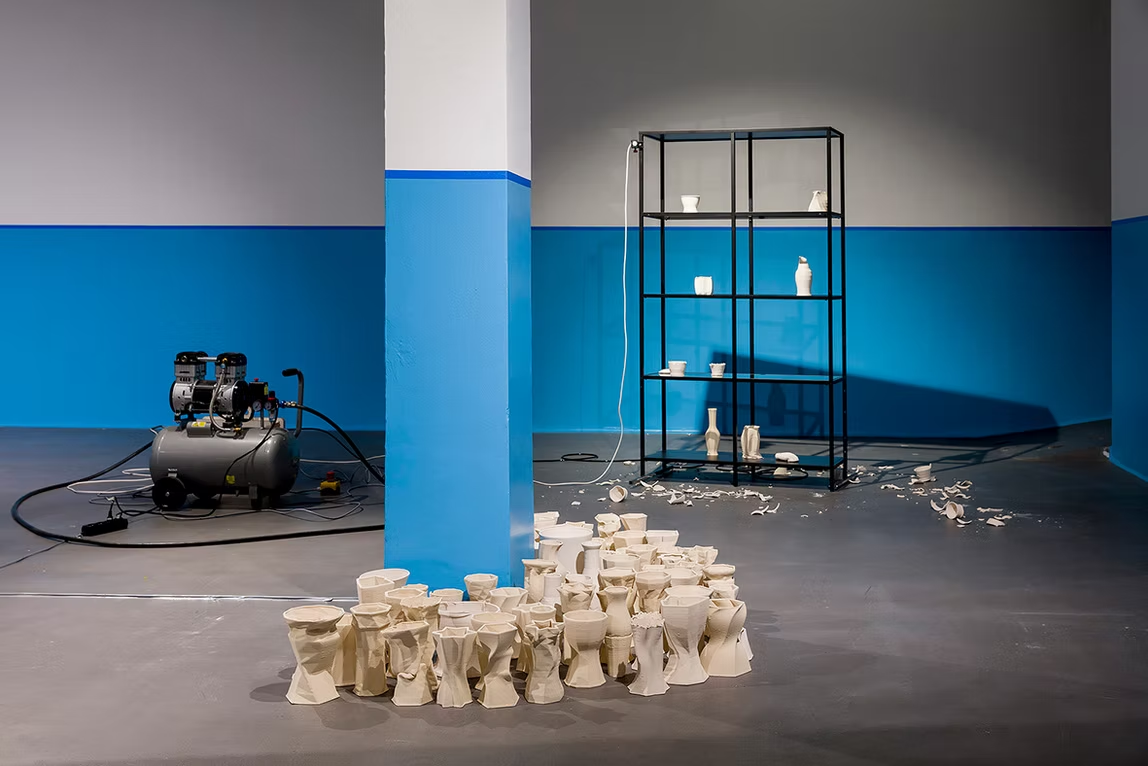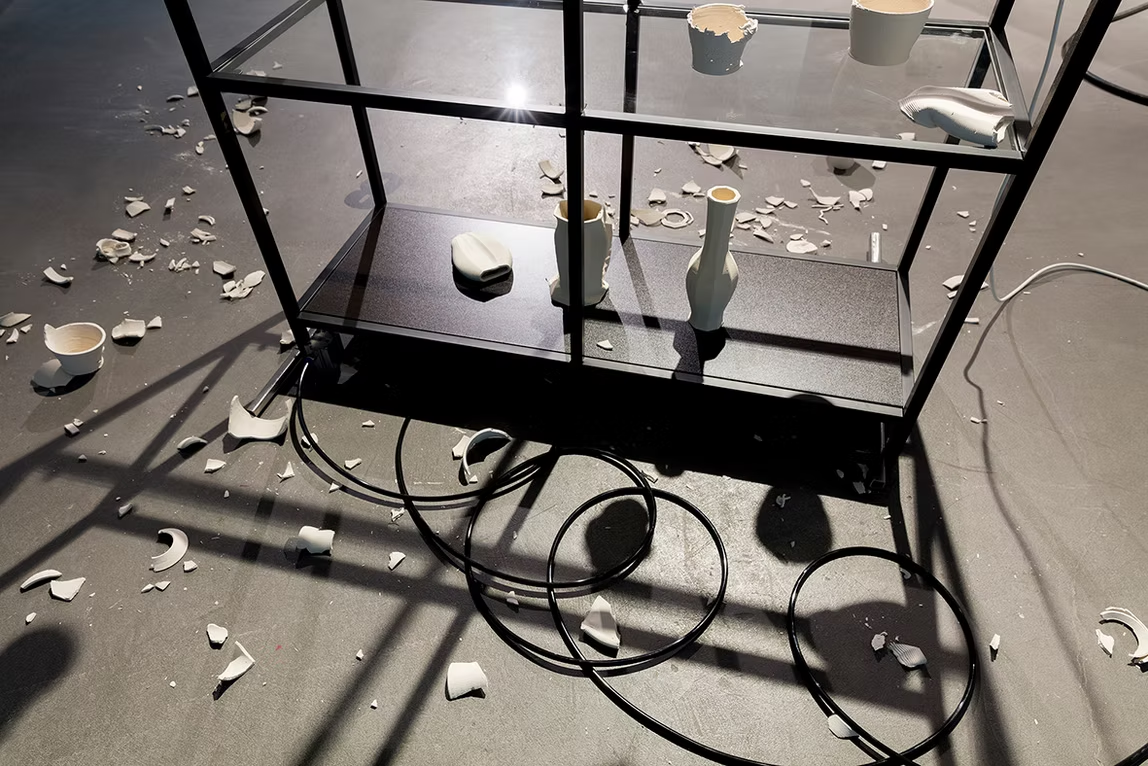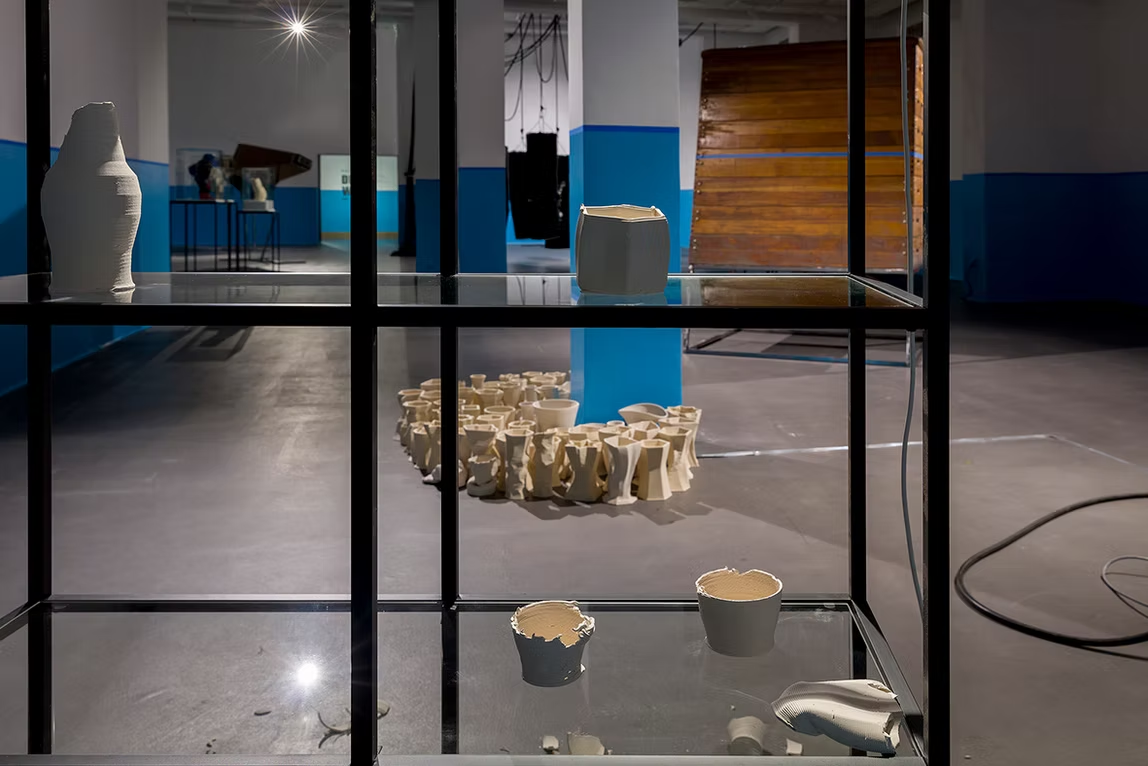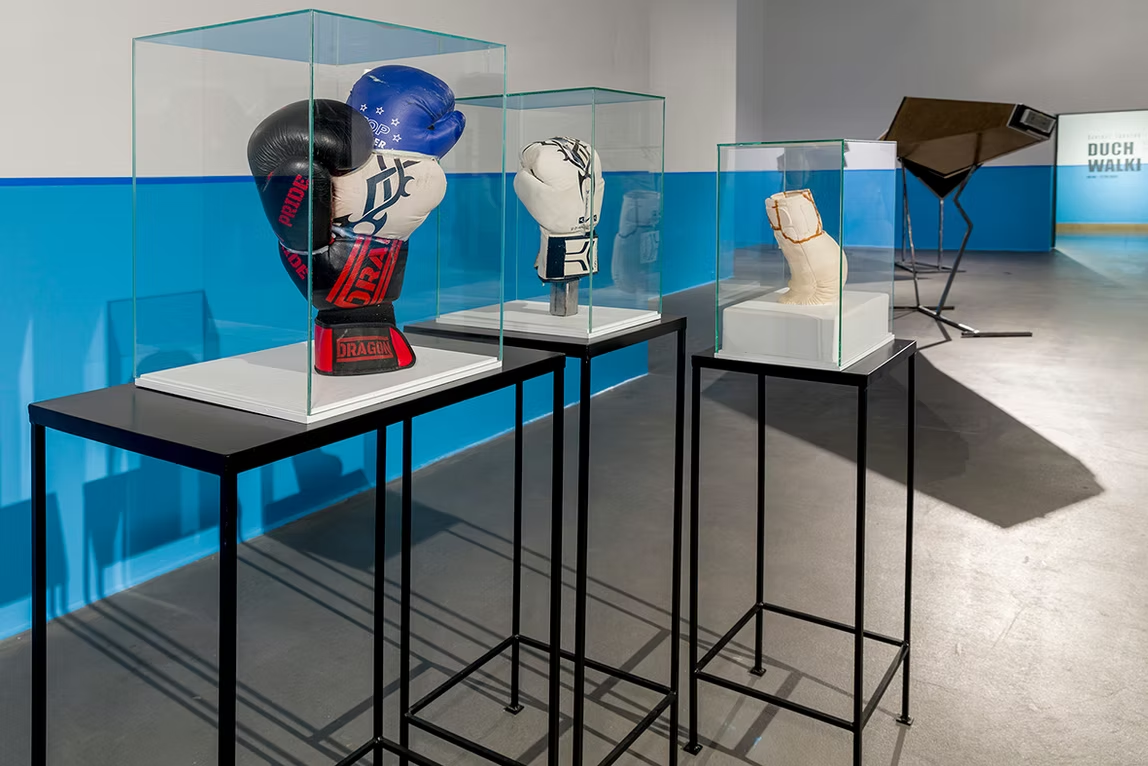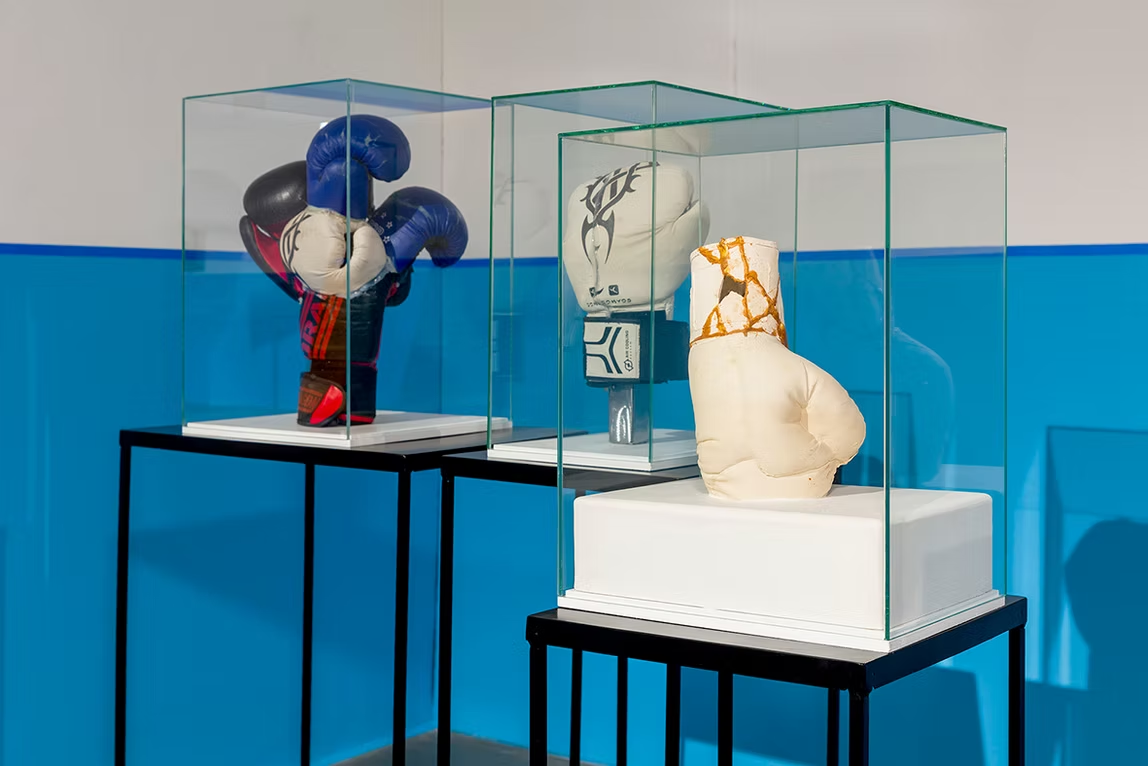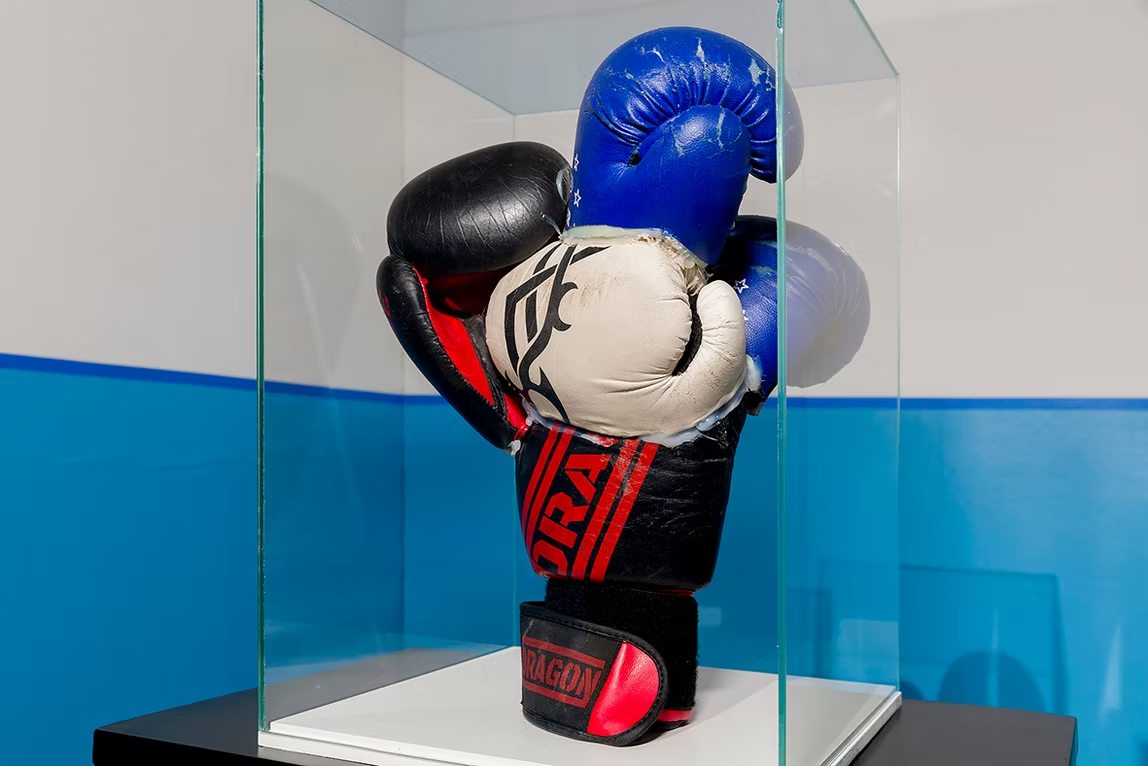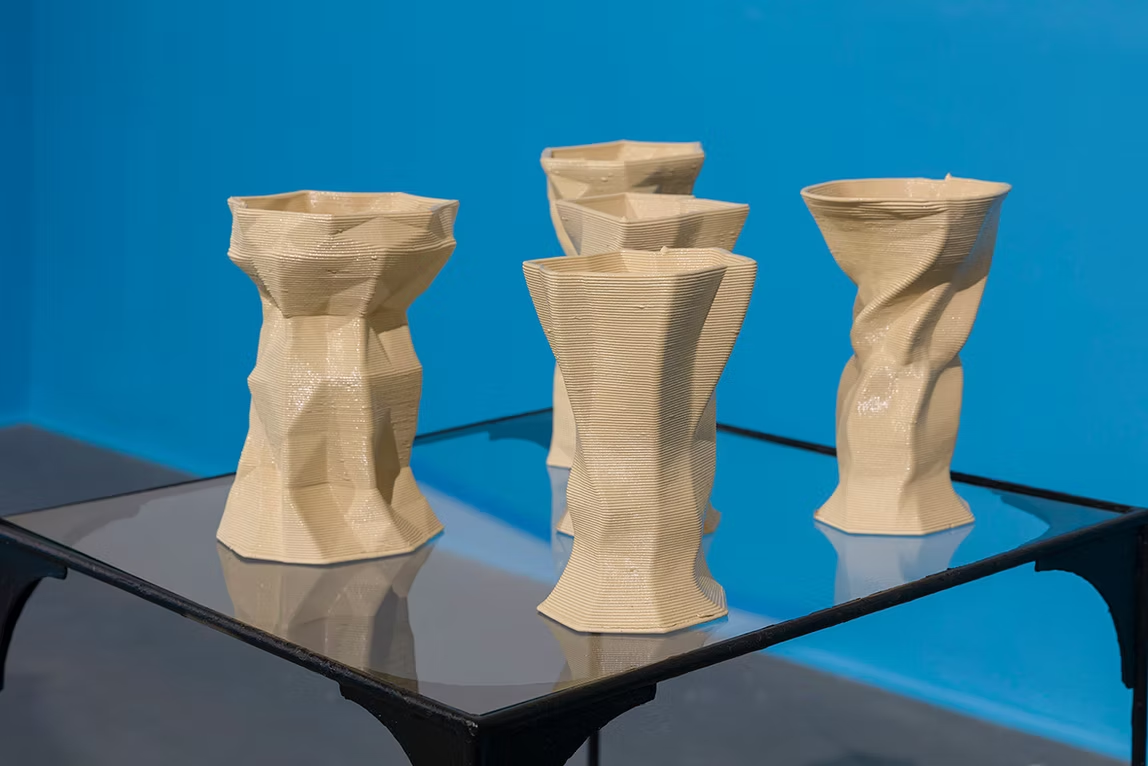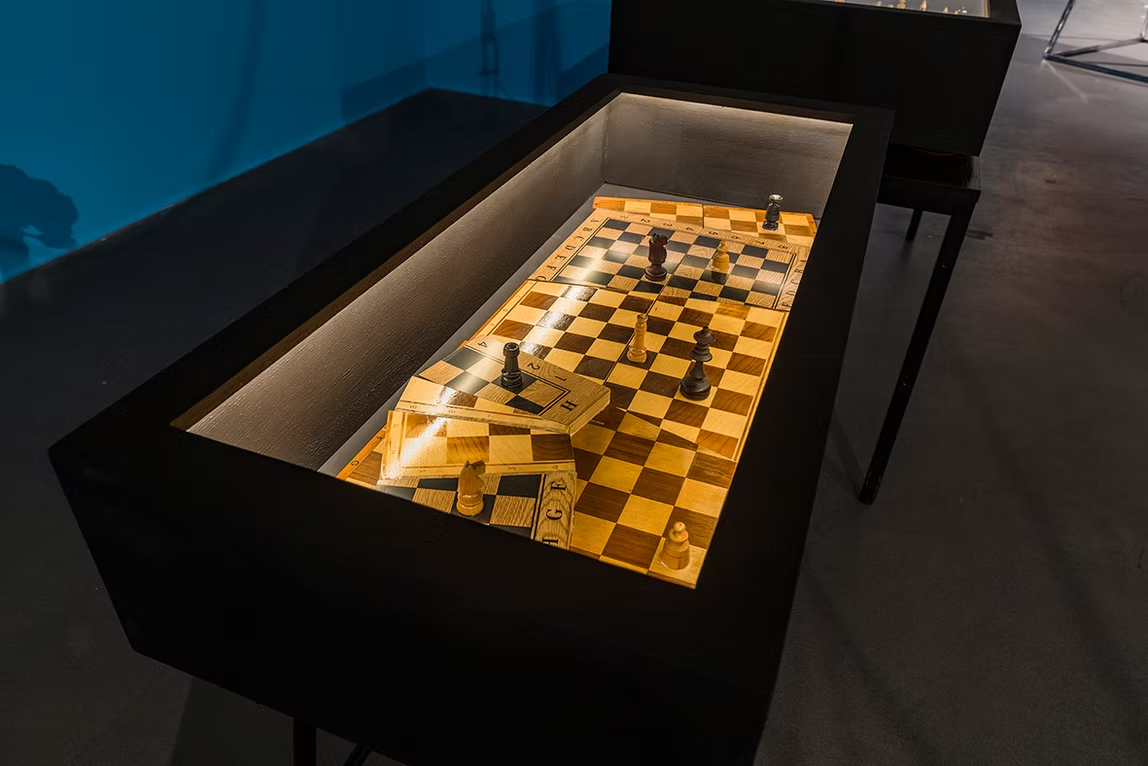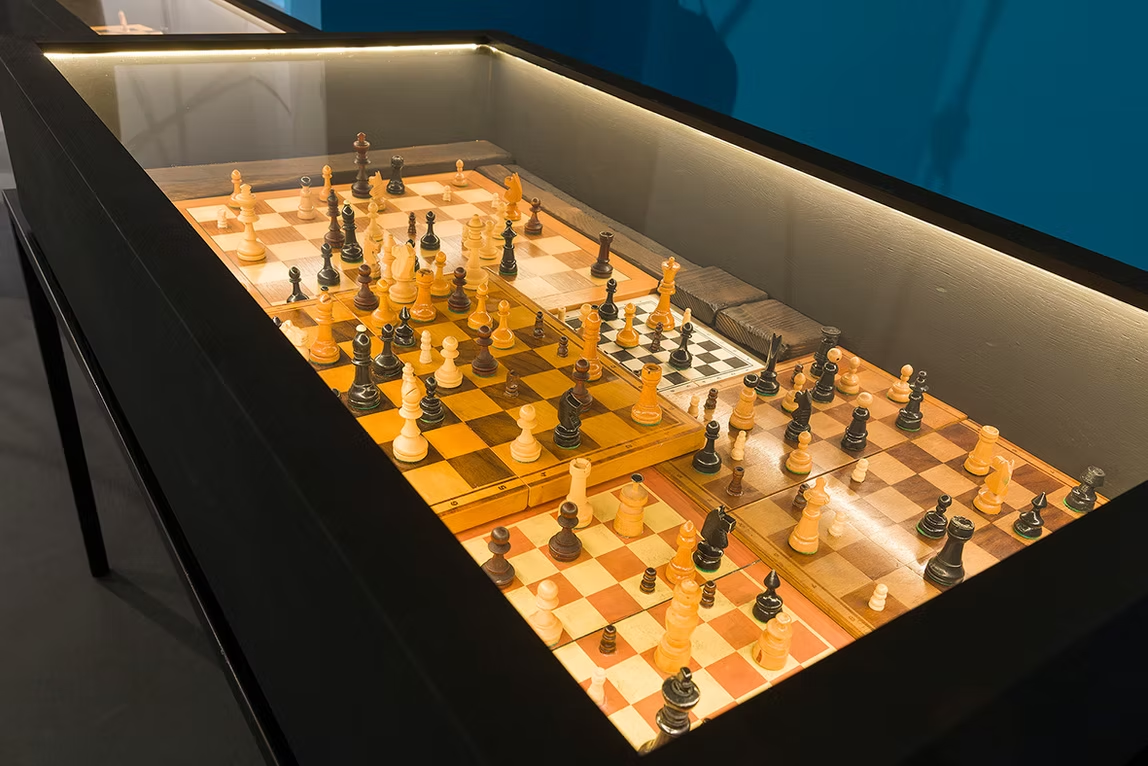The exhibition of sculptural objects by Dariusz Fodczuk, titled “The Fighting Spirit”, explores themes related to sports—boxing, swimming, and chess. By referencing these disciplines, the artist intertwines autobiographical narratives from his father’s life, his own experiences, and those of his son. Through this lens, he examines strategies of survival, competition, struggle, personal discipline, self-actualization, and recognition. Sport is a voluntary human activity driven by competition and the pursuit of maximum results. Fodczuk is particularly interested in professional and elite sports as a means of assimilation and social mobility. Many African American athletes in the second half of the 20th century joined university teams, enabling them to escape socio-economic marginalization. In many countries, sports—alongside military service—have provided individuals with opportunities for integration, advancement, and the transcendence of national and racial barriers. The direct inspiration for this exhibition stems from two figures: Trauda (Gertruda) Dawidowicz, the 1936 Polish swimming champion from the Bielsko-Biała Jewish Gymnastics and Sports Society “Makabi,” and Mieczysław Fodczuk, the artist’s father, who trained as a boxer in his youth. Maslow’s Hierarchy of Needs, a psychological theory published by Abraham Maslow in 1943 in the American Psychological Review, has become a widely recognized model for understanding human motivation. In its simplified form—the so-called pyramid of needs—it has influenced general perceptions of societal order and behavioral priorities. Researchers frequently cite it to emphasize the primacy of physiological needs, followed by safety concerns. In mainstream thought, the pyramid is often invoked as an argument against art, suggesting that artistic pursuits are secondary to more “fundamental” human necessities. Over eighty years after Maslow’s concept was introduced, its interpretation has evolved. Critics argue that human needs are shaped individually and influenced by cultural and social contexts. While the pyramid remains an oversimplified model, it continues to shape our imagination. The ideal of sports competition as a pathway to self-improvement suggests that belonging, esteem, and self-actualization can be achieved through athletic excellence. The pursuit of physical strength, endurance, and mastery is still viewed as a gateway to a better world—but is it truly? “The Fighting Spirit” attempts to address this question. The sculptural objects presented in the exhibition, referencing boxing, swimming, and chess, each carry their own narratives—personal, emotional, and historical. They connect not only to the artist’s biography and his family’s experiences but also to the history of Bielsko-Biała, the city where Dariusz Fodczuk spent his childhood. Share on THE FIGHTING SPIRIT VOL. 1
Bielska Gallery, Bielsko-Biała, 2024
“The Fighting Spirit” is a collection of sculptural objects symbolically linked to three sports: boxing, swimming, and chess—each corresponding to the three highest levels of Maslow’s hierarchy of needs: belonging, esteem, and self-actualization.
This website uses cookies to improve your web experience.


